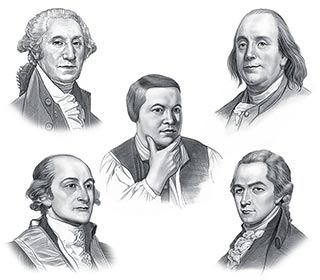Facts about Peter Stuyvesant
The following facts about Peter Stuyvesant provide interesting facts and an overview and description of the life and times and his involvement in the early colonization of America and the Dutch New York Colony.
Peter Stuyvesant was famous as the last Dutch Director-General of the colony of New Netherland until it was ceded to the British.
When was Peter Stuyvesant born? He was born in c1592
Where was Peter Stuyvesant born? He was born in was born in Scherpenzeel, in southern Friesland
He was the son of a minister and received a good education studying at Franeker.
He entered military service in the West Indies in 1625
Peter Stuyvesant became the director of the West India Company's colony of Curacao from 1634 to 1644
In April 1644 he led an attack on the the Portuguese island of Saint Martin and was badly wounded. He had to return to Holland, and there one of his legs was amputated. Peter Stuyvesant wore a wooden leg ornamented with silver bands.
In May 1645 he was appointed by the West India Company to supersede William Kieft as director of New Netherland.
He traveled to the New World and arrived in New Amsterdam ( which later became New York) in May 1647
He became unpopular with the leading burghers who were alienated by his violent and despotic methods and by his devotion to the interests of the West India company.
In 1649 the leading burghers sent the famous Vertoogh, or Remonstrance, to the states-general asking for burgher government and other reforms
In 1653, following various disputes, the first municipal government for the city of New Amsterdam was established and modelled after that of the cities of Holland
In 1647 Stuyvesant seized a Dutch ship illegally trading at New Haven and claimed jurisdiction as far as Cape Cod
In September 1650 he came to an agreement with the commissioners of the United Colonies of New England at Hartford upon the boundary between New Netherland and Connecticut that involved the sacrifice of a large amount of lands.
In 1654 he overthrew the Swedish authority in the region
During the years of 1655, 1658 and 1663 he vigorously suppressed Indian uprisings
In March 1664 King Charles II of England granted to his brother, the Duke of York, the territory between the Connecticut river and Delaware Bay, and Colonel Richard Nicolls with a fleet of 4 ships and 300-400 men was sent out to take possession.
Peter Stuyvesant was misled by instructions from Holland believing that the English expedition was directed wholly against New England. Consequently, Stuyvesant made no preparation for defence until just before the fleet arrived.
The burghers refused to support Stuyvesant who was forced to surrender the town and fort on the 8th of September.
Peter Stuyvesant returned to Holland in 1665 where he was made a scapegoat for the loss of the Dutch colony.
Peter Stuyvesant went back to New York again after the treaty of Breda in 1667 spent the remainder of his life on his farm called the Bouwerie.
Peter Stuyvesant died in February 1672 and was buried in a small chapel on the site of St Mark's Church.
